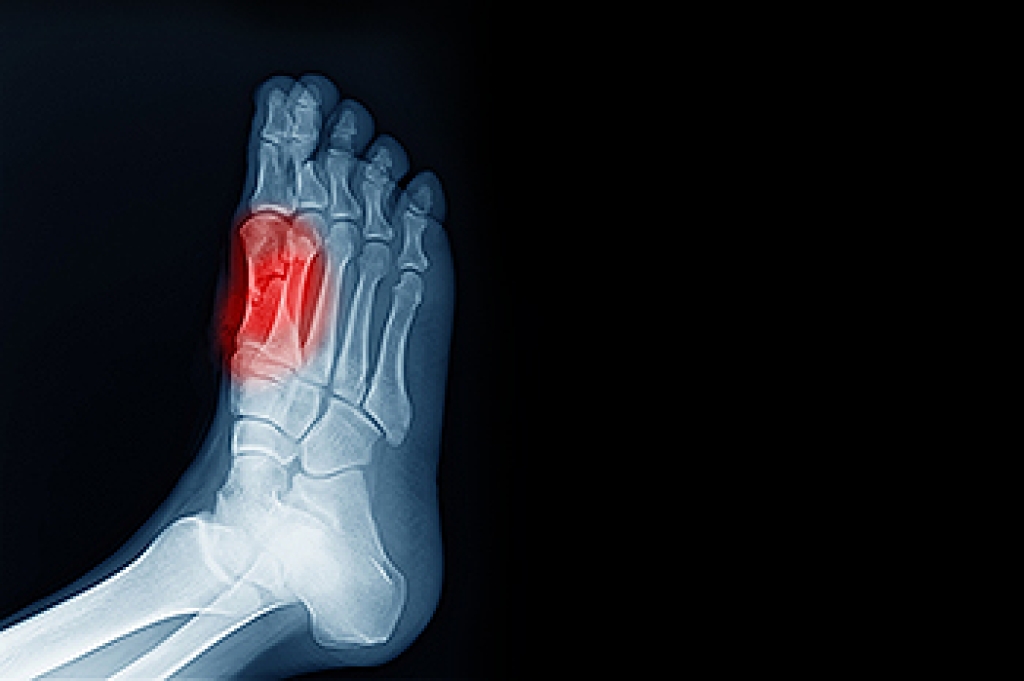 Sesamoiditis is an injury of the sesamoid bones — two tiny, pea-shaped bones located in the ball of the foot, just under the big toe. When these bones and their surrounding tendons are damaged, displaced, or inflamed, you may experience foot pain, swelling, and warmth. The symptoms are usually made worse by walking or wearing thin-soled or high-heeled shoes. Sesamoiditis is a common injury in dancers and joggers, as well as those who have high arches or bunions, and those who wear high heels. Conservative treatments, such as footwear modifications, orthotics, and over-the-counter pain medications are usually sufficient for pain relief. If you are experiencing any foot pain, please seek the care of a chiropodist.
Sesamoiditis is an injury of the sesamoid bones — two tiny, pea-shaped bones located in the ball of the foot, just under the big toe. When these bones and their surrounding tendons are damaged, displaced, or inflamed, you may experience foot pain, swelling, and warmth. The symptoms are usually made worse by walking or wearing thin-soled or high-heeled shoes. Sesamoiditis is a common injury in dancers and joggers, as well as those who have high arches or bunions, and those who wear high heels. Conservative treatments, such as footwear modifications, orthotics, and over-the-counter pain medications are usually sufficient for pain relief. If you are experiencing any foot pain, please seek the care of a chiropodist.
Sesamoiditis can be painful and prevent you from participating in certain activities. To learn more about this condition, please consult with one of the specialists from Thornhill Foot Clinic. Our chiropodists will assess your condition and provide you with quality foot and ankle treatment.
What Is Sesamoiditis?
Sesamoiditis refers to an injury of the sesamoids (two small, pea-shaped bones located beneath the big toe joint) or the tendons and/or surrounding tissue in the joint.
Causes
Sesamoiditis is typically the result of an overuse injury caused by activities that put repetitive pressure on the sesamoid bones and the tendons involved with those bones. These activities can include basketball, football, running, ballet, and tennis. People who have high foot arches and those who frequently wear high-heeled shoes are also at an increased risk of developing sesamoiditis.
Symptoms
Common symptoms of sesamoiditis include:
- Dull, longstanding pain under the big toe joint
- Swelling
- Bruising
- Difficulty straightening or bending the big toe
- Pain during movement
Diagnosis
Sesamoiditis can be diagnosed by physical examination and X-rays. Sometimes other imaging studies, such as a bone scan, MRI, or ultrasound may be needed if damage to the area surrounding the sesamoid bones is suspected.
Treatment
Treatment options include conservative measures, such as padding, strapping, taping or immobilizing the affected foot, taking oral medications or getting steroid injections to reduce pain and swelling, and wearing orthotic devices. Surgical treatment may be necessary if conservative measures are not effective.
If you have any questions, please feel free to contact our office located in . We offer the newest diagnostic and treatment technologies for all your foot care needs.
